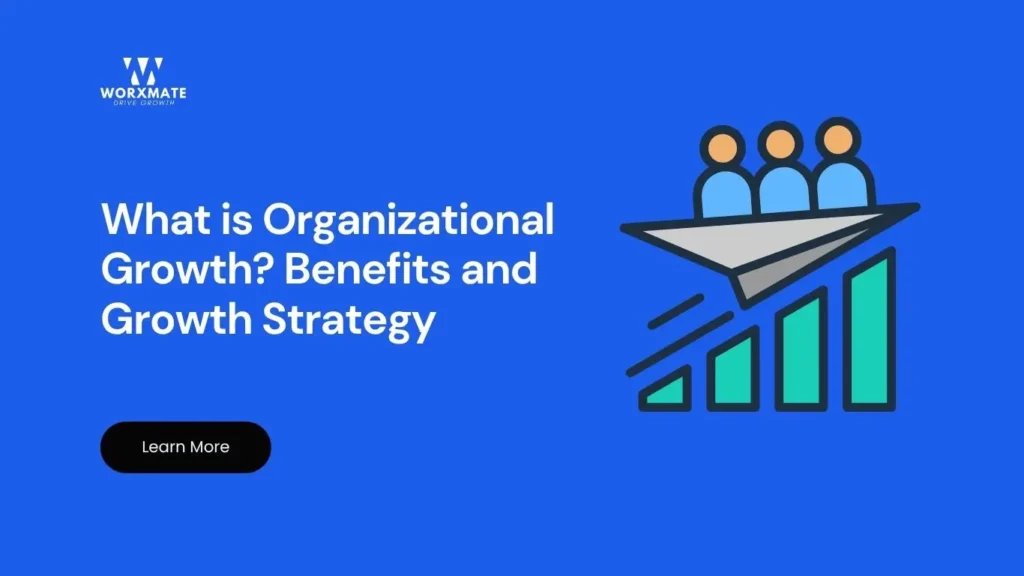Summary
Organizational growth refers to the strategic expansion of a company through increased revenue, market presence, operational capacity, or workforce size. It encompasses various approaches including market penetration, product development, strategic partnerships, and mergers and acquisitions. Successful organizational growth requires careful planning, clear goal-setting, and the ability to adapt to changing market conditions while maintaining operational efficiency and company culture.
In today’s rapidly evolving business landscape, organizational growth has become more than just a buzzword—it’s the lifeline that determines whether companies thrive or merely survive.
Whether you’re a startup founder dreaming of scaling new heights or an established business leader seeking sustainable expansion, understanding the intricacies of organizational growth can make the difference between stagnation and success.
This comprehensive guide will explore proven strategies, real-world case studies, and actionable insights that can transform your approach to business expansion and help you navigate the complex journey of organizational development.
What is Organizational Growth?
Organizational growth represents a pivotal stage in a company’s evolution where expansion becomes not just possible, but strategically advantageous.
At its core, organizational growth involves a systematic approach to increasing a company’s size, scope, or influence in the marketplace through various strategic initiatives.
This growth can manifest in multiple dimensions. Companies may expand their customer base, increase revenue streams, develop new products or services, enter new markets, or enhance their operational capabilities.
The key lies in understanding that organizational growth isn’t merely about getting bigger—it’s about getting better, more efficient, and more competitive.
The Strategic Foundation of Growth
Modern businesses approach organizational growth through carefully planned strategies that align with their core competencies and market opportunities. This strategic foundation typically involves four key components:
Market Penetration focuses on increasing sales of existing products to current markets. This approach often proves most cost-effective as it leverages established relationships and proven products.
Market Development involves taking existing products into new geographical areas or customer segments, expanding the company’s reach without significant product investment.
Product Development centers on creating new offerings for existing customers, deepening relationships while diversifying revenue streams.
Diversification represents the most ambitious approach, introducing new products to new markets, offering the highest potential rewards alongside increased risk.
Benefits of Organizational Growth
-
Enhanced Market Resilience
Companies that successfully implement organizational growth strategies develop greater resilience against market fluctuations. This enhanced stability stems from diversified revenue sources, broader customer bases, and improved operational efficiencies that come with scale.
-
Competitive Advantages Through Scale
Growth often brings economies of scale that smaller competitors cannot match. These advantages include bulk purchasing power, more efficient distribution networks, and the ability to invest in advanced technologies and talent. Such benefits create sustainable competitive moats that protect market position.
-
Innovation and Development Opportunities
Larger organizations typically possess greater resources for research and development, enabling them to stay ahead of industry trends and customer needs. This innovation capacity becomes self-reinforcing, driving further growth through improved products and services.
Growth Strategies Framework
-
Organic vs. Inorganic Growth Approaches
Organic growth strategies focus on internal development and natural expansion using existing resources. Companies pursuing this path invest in marketing campaigns, product improvements, and customer service enhancements to attract new business and retain existing customers.
Inorganic growth strategies involve external partnerships, acquisitions, or mergers to achieve rapid expansion. While potentially faster, these approaches require careful integration planning and cultural alignment to succeed.
-
Building Sustainable Growth Models
Sustainable organizational growth requires balancing immediate expansion goals with long-term goals that prioritize organizational health. This involves maintaining strong company culture, ensuring adequate resource allocation, and building systems that can scale effectively without compromising quality or employee satisfaction.
Case Study: Gartner’s Strategic Growth Transformation
A compelling example of successful organizational growth comes from a Gartner case study involving a private equity-acquired organization that needed to develop aggressive growth strategies. The company faced the challenge of creating a comprehensive capital allocation and M&A strategy within just six months.
-
The Challenge
The newly appointed CFO needed to present a board-ready strategy that would leverage the private equity backing for accelerated growth. This situation required developing sophisticated approaches to mergers and acquisitions while building internal capabilities to support rapid expansion.
-
The Solution and Implementation
Working with Gartner’s expertise, the organization developed a multi-faceted approach that included:
-
- Best practices analysis from leading “efficient growth” companies
- Comprehensive capital investment screening processes
- Customizable M&A due diligence frameworks
- Strategic capability building programs
-
Results and Impact
The collaboration resulted in a comprehensive strategy that gained board approval and was completed in half the expected timeframe. This success demonstrates how proper guidance and strategic planning can accelerate organizational growth initiatives while maintaining quality and thoroughness.
Overcoming Growth Challenges
-
Managing Organizational Complexity
According to McKinsey research, two-thirds of business leaders view their organizations as overly complex and inefficient. This complexity often increases during growth phases, requiring deliberate organizational design and process optimization.
-
Maintaining Cultural Integrity
Organizational growth can strain company culture if not managed carefully. Successful organizations invest in communication systems, leadership development, and cultural reinforcement programs to preserve their core values during expansion.
-
Building Adaptive Capabilities
Modern organizations must develop the ability to anticipate and react to external shocks. Only half of surveyed business leaders believe their organizations are well-prepared for unexpected challenges, highlighting the importance of building resilience into growth strategies.
Global Growth Trends and Statistics
The global business environment shows consistent patterns of organizational growth. In 2023, the number of companies worldwide grew by approximately 3.3 percent, following a record growth of 4.2 percent in 2022. These statistics demonstrate the ongoing vitality of business creation and expansion across global markets.
This growth pattern reflects the continuing opportunities for organizational growth across diverse industries and regions. Companies that position themselves strategically can benefit from these favorable conditions while building sustainable competitive advantages.
Implementing Your Growth Strategy
-
Setting Clear Objectives
Successful organizational growth begins with clearly defined goals that align with overall business strategy. These objectives should be specific, measurable, and time-bound, providing clear direction for growth initiatives.
-
Leveraging Technology and Data
Modern growth strategies increasingly rely on data analytics and artificial intelligence to identify opportunities and optimize performance. Companies that invest in these capabilities gain significant advantages in market analysis, customer understanding, and operational efficiency.
-
Building Strategic Partnerships
Joint ventures and strategic alliances can accelerate organizational growth while minimizing resource requirements. These partnerships provide access to new markets, technologies, and capabilities that might otherwise require significant internal investment.
Conclusion
Organizational growth represents both an opportunity and a challenge for modern businesses. Success requires strategic planning, careful execution, and the right tools to monitor progress and adapt to changing conditions.
While the journey may be complex, companies that approach growth systematically can achieve sustainable expansion while maintaining operational excellence.
This is where Worxmate’s Performance Management software becomes invaluable. Our platform helps organizations set clear growth objectives, track key results, and maintain alignment across teams during expansion phases.
With Worxmate, you can ensure your organizational growth initiatives stay on track while maintaining transparency and accountability throughout your organization.
Ready to accelerate your organizational growth journey? Start your free trial with Worxmate today and discover how our Performance Management software can transform your growth strategy into measurable results.



